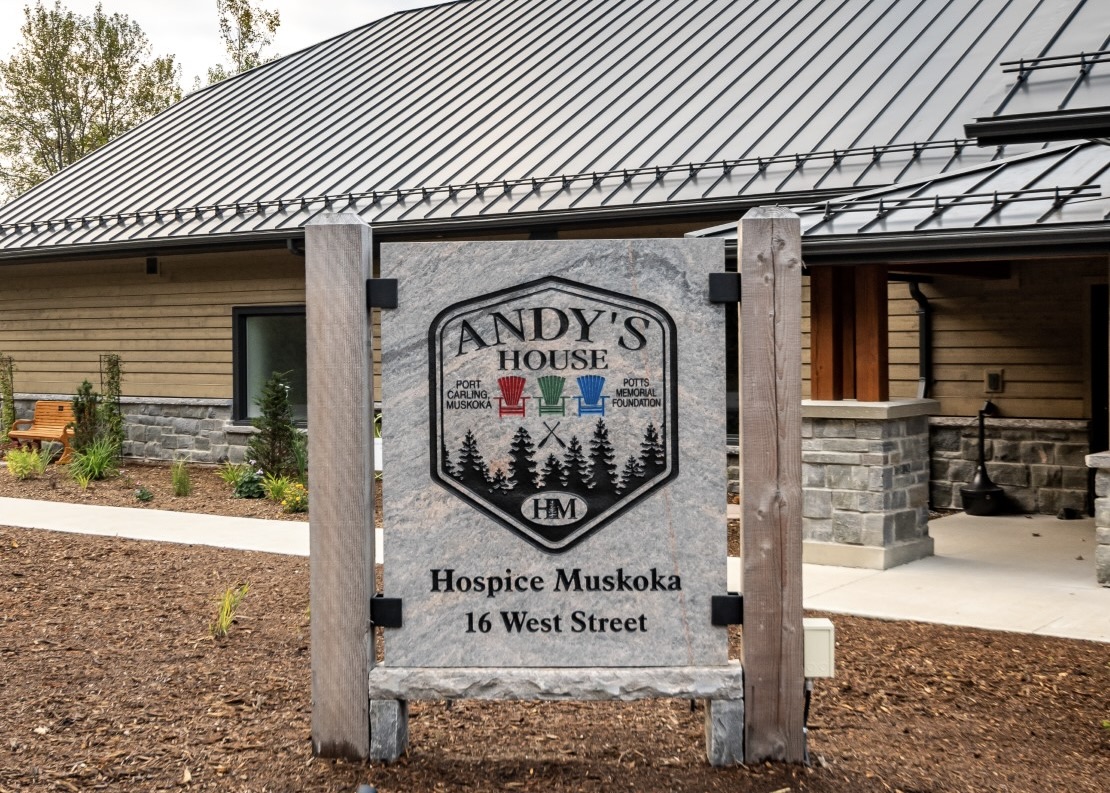As costs skyrocket and most funding is reliant on donations, Muskoka Hospice is calling for more permanent funding.

Muskoka Hospice runs Andy’s House in Port Carling, operating for two and half years with 10 beds.
The hospice’s executive director, Donna Kearney, said it has only 40 per cent of its $2-million operating budget covered, which means it needs to fundraise just over $1 million each year to keep the doors open.
“Having very limited staff that are non-clinical, trying to find sources of funding so that we can continue to operate, is just becoming more difficult,” Kearney said
“We can’t keep a fundraiser on staff because we can’t afford to pay market wages for that position. So we end up absorbing that through the leadership team and the volunteer team, and it’s just becoming very difficult to manage.”
That’s a task she said is made more challenging with the increase in costs for everything from food to medical supplies and the growing demand for their services.
“This is a right of people to have an appropriate choice at the end of life, and we all know that dying in a hospital, where 60 per cent of us die, is not appropriate,” Kearney said.
“Muskoka has an older population than the rest of Ontario, so we’re about 10 per cent older. We also have a very large seasonal population, which triples our permanent population for about six months of the year, and the seasonal population is also older.”
Between 2017 and 2037, the Canadian Institute for Health Information said the population of older seniors 75 and older in Canada is expected to more than double.

Get weekly health news
Kearney said the hospice is also seeing a rise in the number of people accessing their grief supports, which are not unfunded.
Of the 10 beds, the hospice said three are funded partly by the Ministry of Health, five through a temporary agreement with Muskoka Algonquin Healthcare in Bracebridge, one pediatric room is unfunded, and one room is being used for patient guests.
Hannah Jensen, spokesperson for the Minister of Health, said the government has provided $105,200 in top-up funding to Andy’s House for 2022 to 2023, bringing its total contribution to $420,200.
Jensen adds that the Ontario government has committed an additional $13.7 million in operational funding for eligible hospices across the province, on top of the $13 million the province has dedicated to hospice expansion and palliative care quality improvement initiatives since 2018.
“We are also expanding palliative care services by adding 23 new hospice beds to the 500 beds already available across the province to connect Ontarians with comfortable and dignified end-of-life care near their communities and loved ones,” Jensen said.
But for Kearney, the funding from the province is not enough.
She warns that the funding through the hospital is not permeant and that it is an agreement that is constantly getting renewed, leaving a significant portion of their expenses uncertain.
“If we hadn’t had the agreement with the hospital put in place about six or seven months ago, we would have had our doors closed by Christmas,” she said.
Kearney said the beds funded by the hospital are filled 70 to 80 per cent, which she said has kept 85 people out of the hospital and saved the health-care system money.
She said it costs one-third the money for a patient to be in hospice compared to a hospital bed when terminal.
The agreement has been extended twice and is currently in place until the end of April, but Kearney said the hospital also gets that funding through the Ministry of Health and has asked to extend it for another year.
In response, Jensen said funding continues for the three existing beds but that the other beds are funded separately by the local hospital, separate from the ministry.
“If it doesn’t get extended, then we have to find a quick funding source, and I don’t know what that looks like.”
The lack of permeant funding also makes it hard for the hospice to keep staff because it cannot offer nurses and PSW’s a competitive wage, leading to it constantly having to train new staff.
Andy’s house currently employs 32 clinical staff and five leadership team members.
“If we had permanent funding, we would have stability in our staff team. We would have confidence in knowing that we could grow the programs to meet the needs in our community, and we know those needs are going to increase because of our demographic makeup,” Kearney said.
“It’s so important for us as a health-care system to be able to grow those programs and remain viable in this community.”









Comments